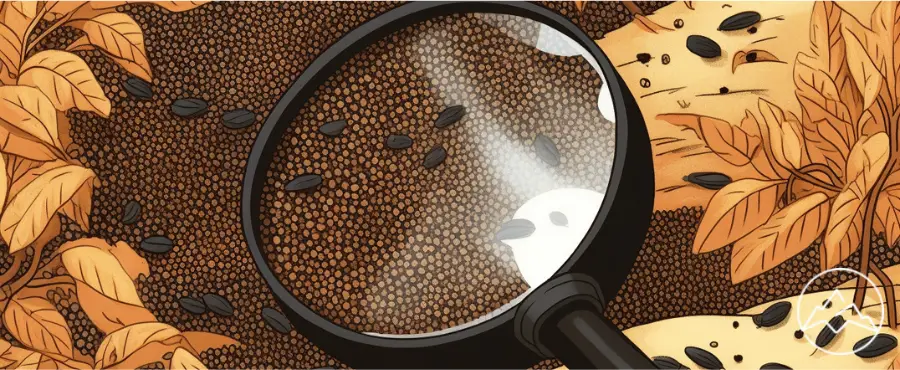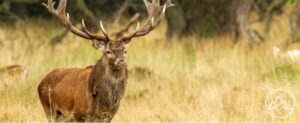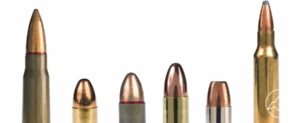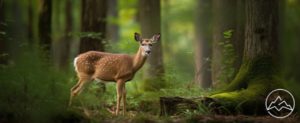Have you ever been walking through the forest and noticed something that looked like animal droppings? Chances are, it was deer scat! Identifying deer poo is a great way to connect with nature and feel more at home in the outdoors. It can also help you gain an appreciation for wildlife conservation.
In this article, we’ll explain what to look for when identifying deer poop so that you can be sure of your findings next time you’re out on a hike. Deer scat is quite distinctive compared to other animals’ droppings, making it relatively easy to spot if you know what to look for. We’ll discuss how size, texture, color, and shape all vary depending on what the deer has recently eaten – as well as how these characteristics can tell us a lot about their diet and where they’ve been roaming.
Finally, we’ll take a closer look at why understanding deer poop is important from both a recreational and ecological perspective. So grab your binoculars, and let’s dive into the fascinating world of deer scat identification!
Understanding The Characteristics Of Deer Poop
Identifying deer poop can be a tricky thing. Luckily, there are some easily identifiable characteristics that make it easier to spot in the wild.
Deer scat is usually tubular and segmented with pointed ends, but its size varies depending on what the animal eats and how much of it they consume. It’s generally 1-2 inches long with a diameter of about ¼ inch – though larger droppings may occur if an animal has eaten more than usual or consumed large amounts of undigested food like nuts or corn.
The color of deer poop also helps distinguish it from other species’ fecal matter, which often appears very dark in comparison. While fresh droppings are typically bright green, chunky brown pellets will form as they age due to oxidation caused by ultraviolet light exposure.
Additionally, deer feces tend to contain visible pieces of fur or feathers along with partially digested plant material such as twigs, grasses, leaves, bark, mushrooms, and lichens.
Finally, since white-tailed deer have been known to carry various parasites and diseases through their digestive systems, always remember to wear gloves when handling any type of wildlife droppings! With these identifying features in mind, let’s move on to looking at the shape and size of this excrement so you can identify them out in nature more quickly.
Identifying The Shape And Size Of Deer Droppings
Have you ever wondered if there is an easy way to identify deer scat? Many people believe that the size and shape of the droppings are indicative of a certain species; however, this isn’t always true. Deer droppings can come in various shapes and sizes depending on what they’ve been eating.
To start with, deer droppings tend to be smaller than other large mammals like elk or moose. The average size is usually one-third inch up to three-quarters inch long. They also have pointed ends rather than being round like some other animals’ waste. You may also find some slightly curved pieces from time to time as well.
In terms of colour, most deer droppings will range from light brown through dark brown shades, although some could end up lighter or even black due to their diet. The best way to distinguish between types of animal poo is by looking at the contents within it. Deer scat generally contains small bits of undigested vegetation, such as grasses and leaves, though you may occasionally see bones or fur too.
Be aware that sometimes fox feces looks similar but won’t contain any plant matter – only hair and insects like beetles! Now armed with these facts, you’ll be able to identify deer poop when out in nature without much difficulty! Moving forward, let’s look at how we can tell apart deer scat from other animal droppings.
Distinguishing Deer Scat From Other Animal Droppings
When identifying deer scat, it’s important to distinguish it from other animal droppings. To do this, you should look at the size and shape of the droppings as well as any accompanying materials.
The size of deer scat is usually between 1/2 inch and one inch in diameter with a length of no more than 3 inches long. It tends to have an oval or round shape that tapers off at both ends. Additionally, some pieces may include small fragments of grass or other vegetation along the outside edges.
To further help identify deer poop, take a closer look at its color and consistency:
- Deer scat will typically be dark brown in color but can range from black to tan depending on what they have been eating recently.
- The texture will vary based on diet but is often described as being either soft or crumbly due to their high-fiber diets.
- Unlike other types of animals such as rabbits which produce pellets, deer scat does not contain multiple distinct parts like seeds or fur.
- You may also notice white streaks running through it – this occurs when stomach acid has mixed with the waste material during the digestion process.
Taking all these factors into consideration can make distinguishing deer scat from other animal droppings much easier. Now let’s move on to examining the color and consistency of deer poop for further identification purposes.
Examining The Color And Consistency Of Deer Poop
When it comes to identifying deer scat, the color and consistency of the feces are key indicators.
To start, deer droppings can range from dark brown to blackish-green or greenish-yellow in hue. It also often has a glossy sheen on its surface due to bile acids that help break down food as part of digestion.
In terms of shape and texture, deer poop is usually cylindrical with rounded ends, like small jelly beans. Its edges may be slightly jagged but should still have an overall smooth surface. The scat is generally quite dry and crumbly in nature yet firm enough for you to pick up without breaking apart too easily.
Now there’s one more factor when examining deer excrement: odor. Deer droppings tend to smell musky or earthy – similar to wet leaves – so if there’s a strong scent coming from wherever you’re looking for scat, chances are it belongs to a deer!
With these clues in mind, we can move on to investigating the temperature and location of deer feces.
Investigating The Temperature And Location Of Deer Feces
Sightseeing in the serene surroundings of nature can be a peaceful pastime, but when it comes to searching for deer scat, it takes on an entirely new sense of purpose. Spotting this evidence left behind by these majestic creatures requires keen eyes and careful consideration.
When investigating temperature and location as indicators of where deer feces may be found, there are several clues that could point you in the right direction.
Start your search with areas that offer plenty of shade from trees and other foliage – deer often prefer to do their business in cooler spots like these. Look out for patches of grass or soil that have been disturbed – chances are some critter has been snacking around there! Then take notice of the surrounding area; if you’re lucky enough to spot any droppings nearby then you should keep an eye out for more signs such as fur or hoof prints.
Finally, pay attention to the time of year – during autumn months especially, deer will become increasingly active due to mating season, which means they’ll be covering greater distances looking for food sources and leaving trails of scat along the way! Be sure to check all likely locations, including open fields, forest edges, waterholes, and even roadsides.
With a little patience, observation, and knowledge, you’ll soon find yourself tracking down those tell-tale traces dropped by our furry friends.
Frequently Asked Questions
What Is The Average Amount Of Deer Scat Produced In A Day?
The average amount of deer scat produced in one day can vary, depending on the age, size, and health of the animal.
Adult deer typically produce anywhere from two to four piles a day, while young fawns may only drop one or two pellets every few hours.
It’s also important to note that if food is scarce or conditions are unfavorable for browsing, then deer may not produce any droppings at all.
How Long Can Deer Scat Last In The Environment?
Deer scat is a natural part of the environment – but how long does it last?
Well, that depends on the conditions. Generally speaking, deer droppings can linger for weeks or even months in an outdoor setting; however, if it’s dry and exposed to direct sunlight, it’ll decompose much quicker.
Scat is more likely to remain intact in humid climates with plenty of moisture and shade.
So while you may not be able to identify these little piles forever, they can definitely stick around for a while!
Are There Any Risks Associated With Handling Deer Scat?
Handling deer scat can be hazardous, as it may contain parasites and toxins.
While the risk of disease transmission is low for healthy adults, there are still some risks associated with handling this type of droppings – such as Echinococcus multilocularis, which causes alveolar echinococcosis in humans.
If you do come into contact with deer scat, make sure to wash your hands thoroughly afterwards to reduce the potential spread of any potential diseases.
How Can I Tell The Difference Between Deer Scat And Other Animal Droppings?
Being able to recognize deer scat is an important skill for any outdoor enthusiast. It can be tricky, though, because many different types of animal droppings look very similar.
Fortunately, there are a few tips you can use to tell the difference between deer scat and other animals’ droppings. Deer scat tends to have pellets that are more round than those from rabbits or squirrels; they appear in segmented piles rather than one pile per deposit like raccoons or opossums; and their color is usually darker brown with bits of green plant matter mixed in.
With these helpful hints, you’ll soon know how to spot deer poop and distinguish it from other animals’ droppings!
Is There An Easy Way To Tell How Old Deer Scat Is?
If you’re on a mission to determine the age of deer scat, then your task is no small feat! It’s like finding a needle in an evergreen forest – nearly impossible.
But with a keen eye and some scientific know-how, there are ways to uncover clues about its age. With fresh droppings being surprisingly soft and malleable, it can be easy to tell how recent they are.
As time passes, however, they become hard and crumble into dust when touched. So if you want to know exactly how old that pile of scat is – good luck!
Wrapping Up
We can learn a lot from observing deer scat. Not only does it tell us about the population of deer in an area, but also how healthy they are and what kind of foods they’re eating.
It’s important to be aware of the risks associated with handling deer scat, as well as knowing how to identify it correctly. For example, if you were out on a hike and came across some droppings that looked like those belonging to a deer, take precautions before touching them.
Look for any signs indicating age – such as discoloration or weathering – which could indicate that the scat is no longer fresh and may pose more risk than reward. Taking these steps will help ensure your safety while still allowing you to appreciate wildlife in its natural environment.











